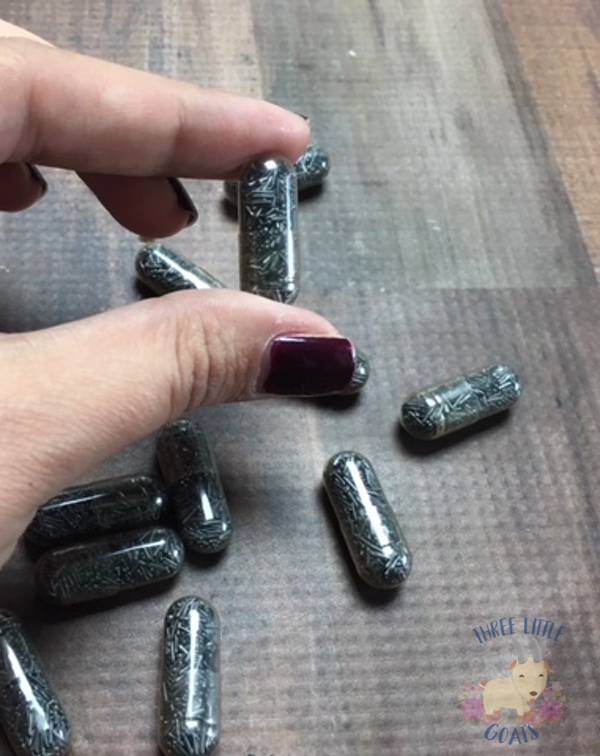This post may contain affiliate links, to learn more about them, check out our Disclosure.
Copper Deficiency in Goats | Symptoms of Copper Deficiency
A lot of areas in the United States do not have enough copper in the soil to keep a goat healthy. This means that sometimes you have to supplement your goats with a Copper Bolus. Each area and each goat is different, but knowing the signs of copper deficiency in goats can keep your goat happy and healthy.
Even if your area has a great copper level, there are other things that can block the absorption of copper. If your area is high in iron, this can prevent the proper absorption of copper.

Here are some signs of copper deficiency in goats:
Fish Tail – This is when the tip of a goats tail becomes bald; the tail will resemble a fish tail.
Hair Loss – Goats will also begin to losing hair on their face, most noticeably around the eyes.
Coat Color – If the coat of your goat starts to change color, this may be the result of copper deficiency.
- Black goats will turn a rust color
- Red goats will turn a gold-ish color
- Golden goats will turn a cream color
- Cream colored goats will turn a slight white color
Overall Coat Appearance – With the color changes in the coat, you may also notice that your goat’s coat has a somewhat singed appearance.
Fertility
Not only do goats show signs of copper deficiency in their coats, but it also affects their fertility.
Male goats may not settle a female. A female may not come into heat, or not show signs of being in heat. Copper deficiency can also cause a doe to abort a pregnancy, or go into premature labor.
Other symptoms of copper deficiency in goats
Crooked feet or legs can also be another sign of copper deficiency. Goats may also have higher than normal parasite loads.
Copper Deficiency Treatments
While I always recommend having free choice minerals available at all times, sometimes this is not enough. This is why copper bolus is always stocked in my goat first aid kit. Many people, myself included, give a copper supplement, or copper bolus, to my goats. Some say to do this every 3 months, while some recommend every 6 months. I tend to give mine copper when I start to notice some of the symptoms listed above.
There are many ways to give your goats a copper bolus; it is a matter of preference. Some goats may gobble it up without a problem, but sometimes you have to be stealthy about it.
Bolus Tips
Hide it – You can hide the bolus in a treat to encourage your goats to take it. I, and my goats, prefer marshmallows, but fig cookies, or a homemade treat made of molasses can work well.
Drenching – Some find it easy to add the copper rods to a liquid and simply drench their goats with it.
Bolus Gun – A bolus gun is a plastic rod that you can use to “shoot” the bolus down the goats throat.
No matter how you give your goat a copper bolus, it is important to make sure that they do not crunch on the rods. You can tell when this happens because you can hear it. While it is nothing life threatening, it can reduce the effectiveness of the bolus.
Check out our YouTube Channel for more behind the scenes of my adventure on a one acre homestead!


